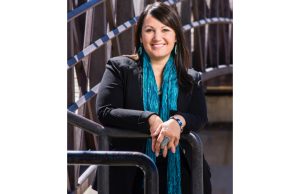Back when the World Wide Web was new, all things Internet, including online donors, were the purview of the marketing departments of many organizations, while offline donors were the responsibility of development departments.
Though “online equals marketing, offline equals development” is a bit too simplistic of a breakdown for the American Red Cross, donors still go into different silos, and the organization is trying to change that. The organization is now trying to put all donors, no matter their origin, into the same bucket.
It goes back to revenue, money in. When marketing and advancement departments both solicit gifts, it can be hard to mark down on the balance sheet exactly what is marketing revenue and what is fundraising revenue.
“It’s a holdover from how things used to be done,” said Jennifer Elwood, executive director of consumer marketing. “It’s how the organization was organized versus the donors’ touchpoints.” Changing that structure, said Elwood, “goes back to putting the donor first. At the end of the day, the donor sees us as ARC, and if we’re not speaking in a unified voice, we’re probably not going to get the engagement.”
Elwood’s team stewards both online and offline donors, but it’s limited to small-transaction donors: those $25, $100, up to $1,000 “core donors,” the base of the so-called donor pyramid. “We focus on reaching those donors through mass marketing,” she said. ARC’s development office handles major donors, where face-to-face meetings and personal relationships are necessary to get the gift.
Though the Red Cross’s split might be more nuanced than online versus offline or marketing versus fundraising, a marketing and development department split is both common and disappearing, said Dennis McCarthy, vice president of strategy and business practices for Charleston, S.C. software firm Blackbaud. “It’s not an anomaly but it’s also going away,” he said. “Online solutions stored online contributors, and you had donor databases that stored offline contributors. (The departments) were separately staffed and budgeted.”
That’s changing, said McCarthy. “Does the donor care? Probably not. In their minds there’s one organization,” he said. “We’re moving towards the donor-centric, and not siloed, view. A donor is a donor.”
The marketing-fundraising split isn’t just a function of ownership; it can also be a function of gift size. “It can be common practice by large charities since the online giving is by and large transactional where no relationship is offered, while relational giving, more significant gift levels, is vital to building larger capital endowment and larger operational dollars,” said Bob Carter, board chair of the Association of Fundraising Professionals (AFP), based in Arlington, Va., and founder of The Carter Companies in Sarasota, Fla.
Amy Eisenstein, a consultant and president-elect of AFP New Jersey, put it slightly differently: “Smaller donors are more marketed to than larger ones,” she said. “Once they become donors, however, they should be treated as such, with more of a personal touch whenever possible.”
Splitting donor revenue into marketing and fundraising can create a “last click” mentality, where fundraisers have expectations of credit and can become protective of “their” donors. Janine Scolpino, associate vice president of individual giving for Save the Children in Westport, Conn., said fundraising must be about the donor and the donor’s journey. “The reality is that a lot of things happened before that last click,” she said. “It has to be all about the donor, and the decisions and investments around the donor.”
Separate goals for marketing and fundraising departments create division and competition, said Scolpino. “When you have shared goals, you’re making decisions in the best interest of the agency,” she said. But it’s more than just deciding upon a common goal; a climate of collaboration comes from the top down.
“The biggest thing is the leadership coming together to make the shared goal vision a reality,” said Scolpino. “I don’t think you need to look at structural change to make the best decision for donors. It’s a leadership vision that says we are all operating under the same set of goals and objectives regardless of where you fit in the organization.”
It starts with the database, said Elwood. “Instead of having multiple databases—some at headquarters, some at chapters, some at lines of business—we’re bringing them into one,” she said, a centralized database that stores donor preference.
“In the past, it was more siloed based on channel or audience,” Elwood continued. “Technology and platforms helped with that a lot. The expectations of customers are that you’re treating someone holistically and you know if they engage with you in one aspect, you know how else they do. It’s knowing someone gives $25 and volunteers and gives blood.”
Eisenstein said nonprofits can and must treat even the smaller, more transactional donors with a personal touch. “Organizations run into problems when they’re not using technology,” she said. “Not addressing a donor by name, that’s high on the no-no list and with technology it should be a no-brainer.”
Segmenting your mailings is another good way to help personalize your correspondence, said Eisenstein. “Capture anything about the donor in your database so you can talk to them more personally,” she said. You need different letters to donors and non-donors, and different letters for first time donors and recurring donors.
ARC must also contend with disaster donors. “They may only give once, or give repeatedly but only in times of disaster, or they may be giving for the first time during a disaster but they understand our mission through stewardship and engagement,” said Elwood. “We have specific tracks aimed at those segments. At the end of the day they’re all incredibly valuable, and we’re thankful for whatever bucket they fall into.”
Saying that revenue is revenue no matter where it comes from might be high-minded and laudable, but the fundraisers who have worked to secure the gifts need to be recognized for a job well done. “We work hard to see fundraisers getting credit,” said Elwood. “I may have sent a direct mail piece to a donor who writes a $5,000 check, but we make sure the chapter and the fundraisers get credit. We want to make sure we’re not competing. It’s not necessarily about who gets credit, it’s about getting the right money at the right time.”











